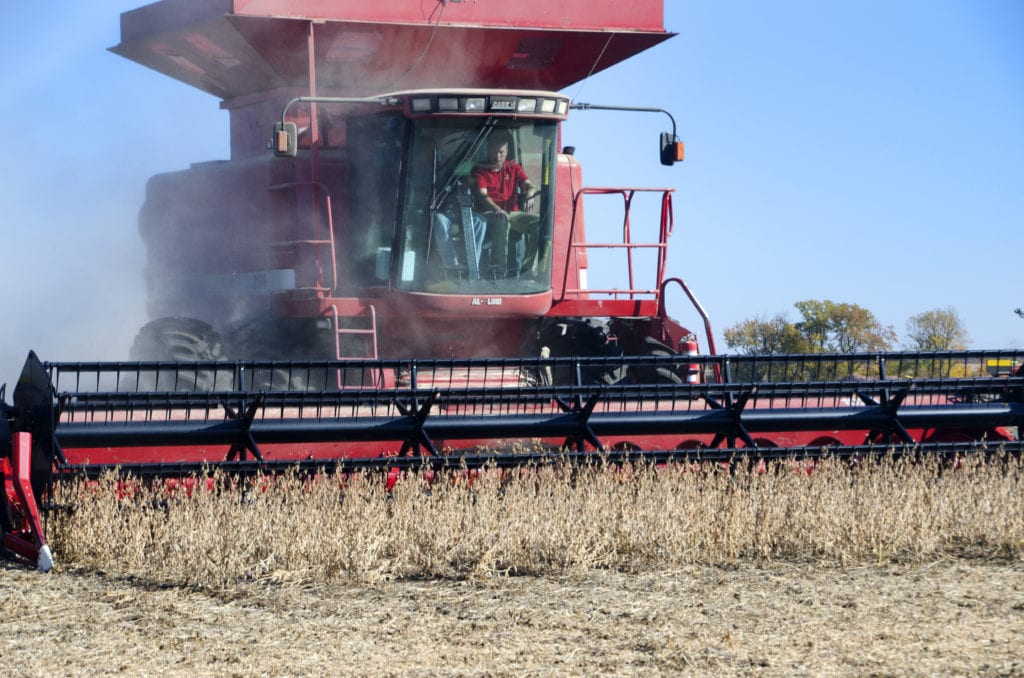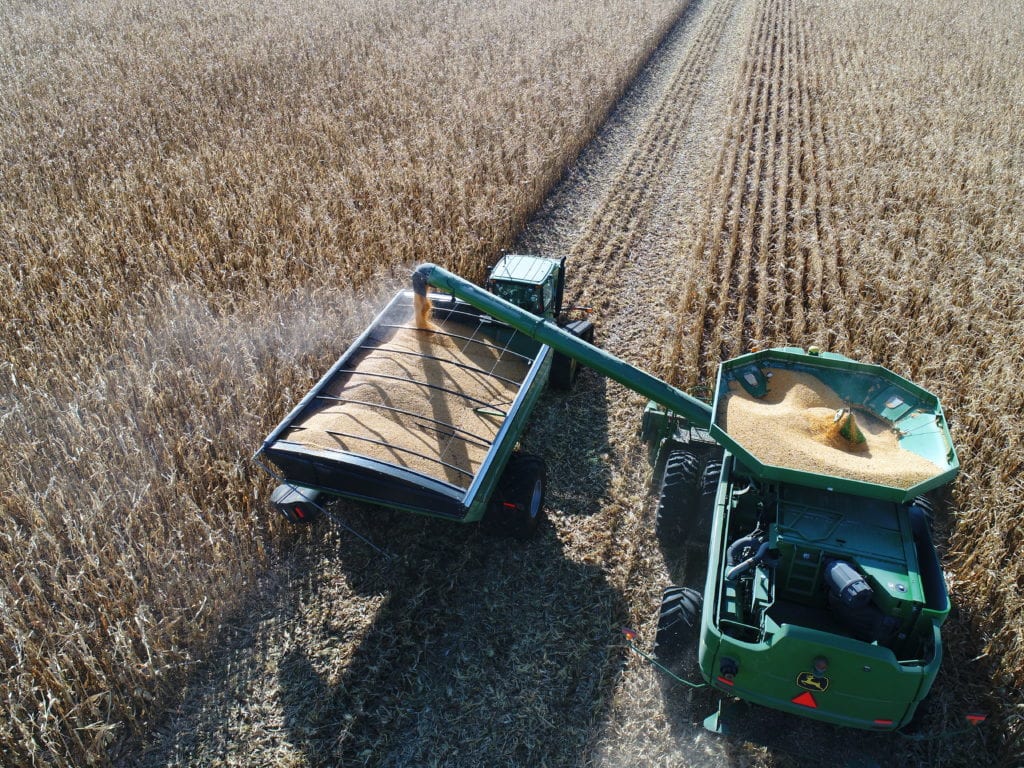By Jeff Shaner | Seed and Technology Manager
 June of 2019 was the moment I almost caved. For nearly 20 years, I have been both a leading disciple and missionary of the AgVenture mantra “never give up on the crop” (referred to as NGUOTC for the rest of this article). Still, the crop year of 1993 was on my mind as I interacted with farmers trying to decide whether to plant a crop with a stated goal of 1) accepting an insurance check, or 2) attaining maximum profit.
June of 2019 was the moment I almost caved. For nearly 20 years, I have been both a leading disciple and missionary of the AgVenture mantra “never give up on the crop” (referred to as NGUOTC for the rest of this article). Still, the crop year of 1993 was on my mind as I interacted with farmers trying to decide whether to plant a crop with a stated goal of 1) accepting an insurance check, or 2) attaining maximum profit.
Late-planted corn in the cool, wet year of 1993 in many cases did not reach black layer in the upper Midwest. Corn was so green that silos had water running out from the bottom of them. Occasionally a football team will choose to punt on 3rd down. June of 2019 seemed like a fitting time to do so from a crop goal standpoint.
First, some comments on my NGUOTC experience in previous encounters with “tough times”. A decade ago we had a year with severe dry weather through the mid-to-late summer. Soybean fields went nearly dormant. Spider mites attacked with force. Decisions had to be made: Do I spend the money to spray? AND Do I spend the money to spray a second time?? I asked farmers, “What are your yield expectations at this point?” Many looked at the situation before them and said 30 bushels per acre (BPA). Those that took 30 BPA as an accepted fact experienced the self-fulfilling prophecy: they, as a group, did harvest soybeans at approximately 30 BPA. Those with a NGUOTC mentality took the necessary actions to produce a top crop. They applied insecticide once and even twice, continued fungicide applications, completed fertility enhancements, and followed all of the timely in-season actions an AgVenture Yield Specialist might recommend that allow your production to reach its peak potential.
 I have to tell you, there came a time late in that season a decade ago where the weather took a turn for the better. The temperatures cooled, the rain fell and the soybean crops did an amazing thing: they came back to life. Not all of them, let me remind you. The fields where growers accepted 30 BPA as their fate were drained of life on a permanent basis by unchecked spider mite populations. Back to the football analogy: If every member of your team is injured by the 4th quarter, you cannot play the game.
I have to tell you, there came a time late in that season a decade ago where the weather took a turn for the better. The temperatures cooled, the rain fell and the soybean crops did an amazing thing: they came back to life. Not all of them, let me remind you. The fields where growers accepted 30 BPA as their fate were drained of life on a permanent basis by unchecked spider mite populations. Back to the football analogy: If every member of your team is injured by the 4th quarter, you cannot play the game.
What yield levels did NGUONT enthusiasts achieve that fall? 65 BPA as a general rule. Well, that’s a head-scratcher. 30 BPA versus 65 BPA, all based on the resolve to stand in your field midsummer and believe maximum profit was still an attainable goal.
Folks, the genetics we are working with have greatly improved over those your predecessors used in previous decades. The drought year of 2012 was first-hand proof of that. 2012 felt a lot like the drought year of 1988. In 1988, we saw corn harvest realize returns in the 20 (or less) to 60 BPA range. 2012 drought yields came in closer to the 80-to-140 range under very similar conditions. Better genetics, better farming practices, better access to information on how to coax the most out of detrimental crop conditions, plus more farm entrepreneurs inoculated with the NGUOTC mindset all leads to a better crop.
 So back to 2019. A self-fulfilling prophecy moment is once again sitting on our laps as we stand out in fields early summer. This result rang true across multiple states and countless farms: those who looked at their crop and visualized potential returns in the crop insurance range near 180 BPA got exactly that. For them, there were no additional dollars invested in maximum profit attaining activities like renitrification, fungicide applications (once for some, often twice for others), scouting and addressing pest concerns, for a few examples.
So back to 2019. A self-fulfilling prophecy moment is once again sitting on our laps as we stand out in fields early summer. This result rang true across multiple states and countless farms: those who looked at their crop and visualized potential returns in the crop insurance range near 180 BPA got exactly that. For them, there were no additional dollars invested in maximum profit attaining activities like renitrification, fungicide applications (once for some, often twice for others), scouting and addressing pest concerns, for a few examples.
For those who made the determination that these May and June conditions did not have the authority to write the ending to the 2019 crop yearbook, what has been the result? Amazingly, we have seen those stories rolling in, as harvest continues into late November. Stories like: “235 BPA average on a tough piece of ground” and “250 BPA average from June-planted corn, and that field even had some bad spots!” Another said, “I’m not even telling my neighbors that my June-planted corn averaged 263 BPA because they won’t believe me.” Just this morning I heard someone say, “265 whole field average with the good spots running around 330 on the yield monitor!” These are all amazing returns in any year.
That’s corn. What about soybeans? “Right up until the combine rolled they looked like 40 BPA, but were actually over 60,” one farmer told me. Another said: “Two agronomists guessed 54 and 58 BPA one week before harvest and my actual was 62.” “Our better farms ran over 70 BPA and are putting the neighbors to shame,” said another. In 2019, these returns hitting the ledger are the finishing touches on your NGUOTC master thesis. It’s fairly clear that even in the days right before harvest, what you see before you isn’t always an accurate depiction of what the scale will declare!
Does planting date matter? Yes, in fact, it does. Planting date sets your top-end range of possibilities at an even higher level than later planting dates. Does a late planting date predicate doom to low yields? No. No. No, it does not.
What then is it that dooms you to low yields? Your mindset becomes the self-fulfilling prophecy of things to come. In June, you need to determine with confidence that your investment in “top crop” in-season actions will have grain rolling into the head of that combine come fall leading to full hoppers, loaded semis running towards the bin site, and piles of scale tickets covering your desk top. These are the hallmarks of someone in business to be a moneymaker.